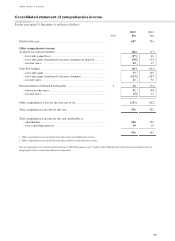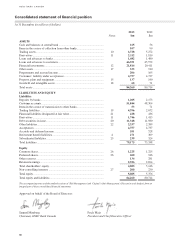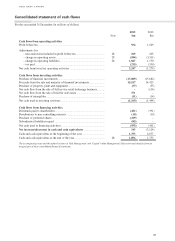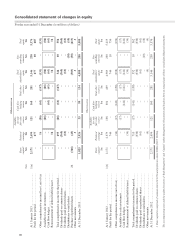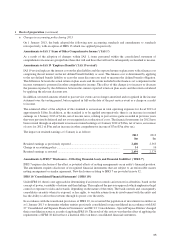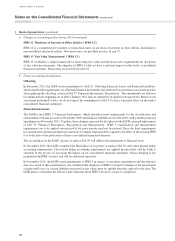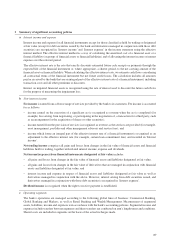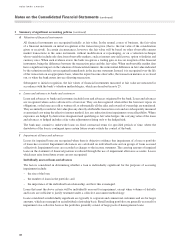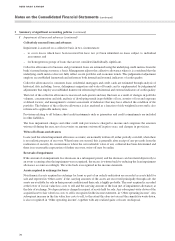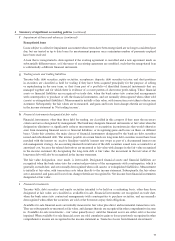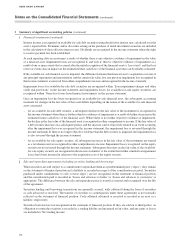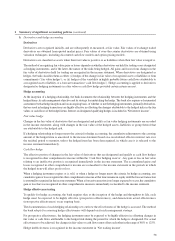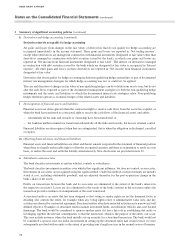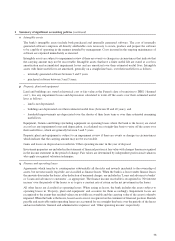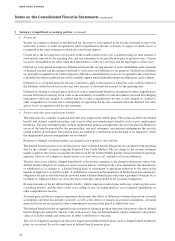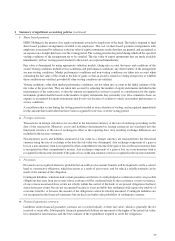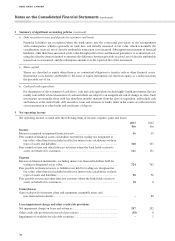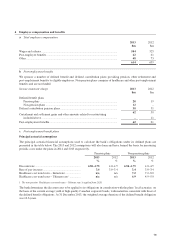HSBC 2013 Annual Report Download - page 71
Download and view the complete annual report
Please find page 71 of the 2013 HSBC annual report below. You can navigate through the pages in the report by either clicking on the pages listed below, or by using the keyword search tool below to find specific information within the annual report.
69
2 Summary of significant accounting policies (continued)
f Impairment of loans and advances (continued)
For all loans that are considered individually significant, the bank assesses on a case-by-case basis at each reporting
date whether there is any objective evidence that a loan is impaired. The criteria used by the bank to determine that
there is such objective evidence include:
– known cash flow difficulties experienced by the borrower;
– past due contractual payments of either principal or interest;
– breach of loan covenants or conditions;
– the probability that the borrower will enter bankruptcy or other financial realization;
– a concession granted to the borrower for economic or legal reasons relating to the borrower’s financial difficulty
that results in forgiveness or postponement of principal, interest or fees, where the concession is not insignificant;
– there has been deterioration in the financial condition or outlook of the borrower such that its ability to repay is
considered doubtful; and
– there is a significant downgrading in credit rating by an external credit rating agency.
For those loans where objective evidence of impairment exists, impairment losses are determined considering the
following factors:
– the bank’s aggregate exposure to the customer;
– the viability of the customer’s business model and their capacity to trade successfully out of financial difficulties
and generate sufficient cash flow to service debt obligations;
– the amount and timing of expected receipts and recoveries;
– the likely dividend available on liquidation or bankruptcy;
– the extent of other creditors’ commitments ranking ahead of, or pari passu with, the bank and the likelihood of
other creditors continuing to support the company;
– the complexity of determining the aggregate amount and ranking of all creditor claims and the extent to which
legal and insurance uncertainties are evident;
– the realizable value of security (or other credit mitigants) and likelihood of successful repossession;
– the likely deduction of any costs involved in recovery of amounts outstanding; and
– when available, the secondary market price of the debt.
The realizable value of security is determined based on the current market value when the impairment assessment is
performed. The value is not adjusted for expected future changes in market prices; however, adjustments are made
to reflect local conditions such as forced sale discounts.
Impairment losses are calculated by discounting the expected future cash flows of a loan, which includes expected
future receipts of contractual interest, at the loan’s original effective interest rate and comparing the resultant present
value with the loan’s current carrying amount. The impairment allowances on individually significant accounts are
reviewed at least quarterly and more regularly when circumstances require. This normally encompasses re-assessment
of the enforceability of any collateral held and the timing and amount of actual and anticipated receipts. Individually
assessed impairment allowances are only released when there is reasonable and objective evidence of a reduction
in the established loss estimate.


